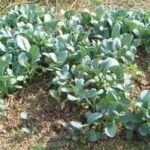Are you considering using Terro as a pest control method in your vegetable garden, but are concerned about its safety? This article aims to provide you with all the information you need to make an informed decision.
We will explore the uses of Terro in gardening, its impact on vegetables and produce, compare it with other pest control methods, and address common concerns. By the end of this article, you will have a better understanding of whether Terro is truly safe for your beloved vegetable garden.
Terro is a popular brand known for its effective pest control products. Its use in gardening has gained attention for its ability to eliminate pests that pose a threat to plants and produce. However, when it comes to using such products in vegetable gardens, safety becomes a top priority. This section will delve into the safety aspects of using Terro in your vegetable garden, addressing concerns and providing tips for safe usage.
As we explore the safety of Terro for vegetable gardens, it’s important to understand its potential impact on vegetables and produce. Will it harm the very plants you’re trying to protect? These questions will be answered as we dive deeper into this topic. Additionally, we will compare Terro with other pest control methods commonly used in vegetable gardens, offering insights into which option may be the safest choice for your garden.
Understanding the Safety of Terro for Vegetable Gardens
Terro is a popular brand of pest control products that is widely used in gardening to combat common garden pests such as ants, cockroaches, and other insects. It is known for its effectiveness in eliminating pests and keeping gardens healthy. However, many gardeners are concerned about whether Terro is safe to use in vegetable gardens where edible produce is grown.
When it comes to understanding the safety of Terro for vegetable gardens, it’s important to consider the ingredients used in the product. Terro contains a sweet liquid bait that attracts pests and contains poison to eliminate them. While this may raise concerns about the safety of using Terro around edible plants, the product is generally considered safe for vegetable gardens when used correctly.
It is essential to follow the instructions provided on the label when using Terro in vegetable gardens. This includes placing the bait stations away from areas where edible produce is grown and ensuring that it does not come into direct contact with fruits and vegetables. Additionally, using Terro during non-fruiting stages of plants or during off-seasons can also help minimize any potential impact on produce.
Impact of Terro on Vegetables and Produce
Terro, a popular choice for pest control in gardens, is often used to protect vegetables and produce from pests and insects. However, many gardeners wonder if it is truly safe for their edible plants. Understanding the impact of Terro on vegetables and produce is crucial for any gardener looking to maintain the health and safety of their garden.
When it comes to using Terro in vegetable gardens, it is important to consider the potential impact on the plants themselves. Here are some key points to consider when using Terro in your vegetable garden:
- Targeted Pest Control: Terro is designed to specifically target pests such as ants, spiders, cockroaches, and other common garden insects. This means that it can effectively eliminate these pests without harming your vegetables and produce.
- Non-Toxic Ingredients: Many formulations of Terro use non-toxic ingredients that are safe for use around edible plants. This ensures that your vegetables remain safe for consumption while still effectively controlling pests.
- Minimal Residue: When used according to the instructions, Terro leaves minimal residue on plants and produce. This means that there is little risk of contamination or harm to the vegetables in your garden.
Overall, when used properly, Terro can be a safe and effective option for protecting vegetable gardens from pests without posing a threat to the vegetables or produce themselves. In the next section, we will explore how Terro compares with other pest control methods for vegetable gardens.
Comparing Terro With Other Pest Control Methods for Vegetable Gardens
When it comes to pest control in vegetable gardens, there are numerous options available to gardeners. From chemical pesticides to natural predators, each method has its own advantages and disadvantages. In this section, we will explore how Terro compares to other pest control methods for vegetable gardens.
Chemical Pesticides vs. Terro
Chemical pesticides have long been a go-to solution for controlling pests in gardens. While they are effective in eliminating unwanted insects, they often come with the risk of harmful chemicals seeping into the soil and affecting the vegetables grown in the garden. On the other hand, Terro offers a more targeted approach by attracting and eliminating specific pests without posing a threat to the surrounding plants and produce.
Natural Predators vs. Terro
Another method for pest control in vegetable gardens is introducing natural predators such as ladybugs or lacewings. While this can work effectively in some cases, it may not always be practical or feasible. Terro offers a more convenient and controllable solution, as it can be easily applied and monitored without relying on unpredictable natural predators.
Organic Sprays vs. Terro
Many gardeners opt for organic sprays made from natural ingredients to combat pests in their vegetable gardens. While these sprays are considered safe for the environment, they may not always be as effective as desired. Terro provides a consistent and reliable alternative that can target specific pests without causing harm to the vegetables being grown.
Tips for Using Terro Safely in Vegetable Gardens
When using Terro in your vegetable garden, it is important to follow some tips to ensure the safety of your produce and the effectiveness of the product. First and foremost, it is essential to read and follow the manufacturer’s instructions on how to use Terro properly in a vegetable garden. This will ensure that you are using the product in a way that is safe for both your plants and the environment.
Another important tip for using Terro safely in vegetable gardens is to avoid direct contact with the vegetables themselves. Make sure to apply Terro only where pests are present and not on the edible parts of your plants. Additionally, it is recommended to use bait stations or traps if you are concerned about any potential contact with the product.
Moreover, it is crucial to consider the timing of applying Terro in your vegetable garden. It is best to apply Terro during non-peak hours when pollinators such as bees are less active. This will reduce the risk of unintended harm to beneficial insects while targeting pests effectively.
In summary, using Terro in a vegetable garden can be safe if used correctly. By following these tips, you can ensure that your produce remains safe for consumption while effectively managing pest issues.
| Tips for Using Terro Safely | In Vegetable Gardens |
|---|---|
| Follow manufacturer’s instructions | Read and adhere to guidelines |
| Avoid direct contact with vegetables | Apply only where pests are present |
| Consider timing of application | Apply during non-peak hours for pollinators |
Addressing Common Concerns About Using Terro in Vegetable Gardens
Environmental Impact of Terro
One of the common concerns about using Terro in vegetable gardens is its impact on the environment. Many gardeners are worried about the potential harm that chemical pesticides can pose to beneficial insects, birds, and other wildlife.
However, it’s important to note that Terro is specifically designed to target ants and other pests without causing harm to other organisms. The active ingredient in Terro is typically borax, which has a low toxicity for humans and animals when used as directed.
Effect on Soil and Plants
Another concern that gardeners may have is whether using Terro can affect the health of the soil and the plants grown in the vegetable garden. When used properly, Terro should not have any adverse effects on the soil or the vegetables being grown.
It’s important to follow the application instructions carefully and avoid overusing the product. Additionally, when using Terro near edible crops, it’s advisable to place baits in areas where they will not come into direct contact with the produce.
Residues on Produce
Some gardeners may worry about residues of Terro ending up on their homegrown vegetables. While this is a valid concern, correctly applying Terro baits should minimize any risk of contamination. Placing baits away from vegetable plants and following guidelines for proper use reduces the likelihood of residues ending up on produce. As an additional precaution, it’s advisable to wash any harvested vegetables thoroughly before consumption.
By addressing these common concerns, gardeners can make informed decisions about whether to use Terro in their vegetable gardens. When used according to instructions and with care for environmental impact, many find success in controlling ant infestations without harming their garden ecosystem.
Success Stories of Using Terro in Vegetable Gardens
When it comes to using Terro in vegetable gardens, many gardeners have reported success stories that showcase the effectiveness of this pest control method. One of the common pests that gardeners often encounter are ants, and Terro has been praised for its ability to effectively eliminate ant infestations in vegetable gardens. Gardeners have reported a significant decrease in the presence of ants after using Terro, allowing their vegetables to thrive without interference from these pests.
In addition to managing ant infestations, gardeners have also shared success stories about using Terro to control other common garden pests such as aphids, mealybugs, and beetles. By strategically placing Terro baits around their vegetable gardens, these gardeners have noticed a reduction in the population of these harmful insects, leading to healthier and more bountiful harvests.
Furthermore, many gardeners have expressed their satisfaction with the safety of using Terro in their vegetable gardens. They have emphasized that when used according to the product instructions, Terro is safe for both edible plants and the environment. This reassurance has given them peace of mind knowing that they can effectively manage pest problems without compromising the safety of their homegrown produce.
Overall, these success stories highlight how Terro is indeed safe for vegetable gardens while also being an effective solution for managing various pest issues. With proper application and adherence to guidelines, many gardeners have experienced positive results when incorporating Terro into their gardening practices.
Conclusion
In conclusion, the safety of Terro for vegetable gardens is a topic that requires careful consideration. While Terro can be effective in controlling pests and insects that may damage your vegetables and produce, it is important to use it cautiously and according to the instructions provided. The impact of Terro on vegetables needs to be monitored closely, as some users have reported concerns about potential harm to their crops.
When comparing Terro with other pest control methods for vegetable gardens, it is essential to weigh the benefits and risks. While Terro may offer an effective solution for eliminating pests, organic and natural alternatives should also be considered for those who prioritize the health and safety of their vegetables and environment.
Ultimately, whether or not Terro is truly safe for vegetable gardens depends on various factors such as proper usage, environmental considerations, and individual preferences. It is important for gardeners to do thorough research, seek advice from experts, and consider their own experiences before deciding whether or not to use Terro in their vegetable gardens. By taking these factors into account, you can make an informed decision about whether Terro is safe for your specific gardening needs.
Frequently Asked Questions
Can Terro Ant Killer Be Used in Vegetable Garden?
Terro Ant Killer should not be used in a vegetable garden, as it contains chemicals that could be harmful if they come into contact with edible plants. There are other methods to control ants in a vegetable garden that are safer for plants and food.
Is It Safe to Use Ant Bait in Vegetable Garden?
Using ant bait in a vegetable garden can pose risks to both the plants and the vegetables themselves. While some ant baits may be labeled as safe for use around edible plants, it’s crucial to research and choose products carefully to ensure the safety of your garden.
Is Terro Liquid Ant Bait Safe on Plants?
Terro Liquid Ant Bait is generally considered safe on plants once it has been placed in an enclosed bait station. It is important to follow the instructions on the product label to minimize any potential risk to plants. It’s always best to err on the side of caution when using any chemical near plant life.

If you’re looking to get into vegetable gardening, or are just looking for some tips on how to make your current garden better, then you’ve come to the right place! My name is Ethel and I have been gardening for years. In this blog, I’m going to share with you some of my best tips on how to create a successful vegetable garden.





